THE PASTA THAT LOVES YOUR HEART
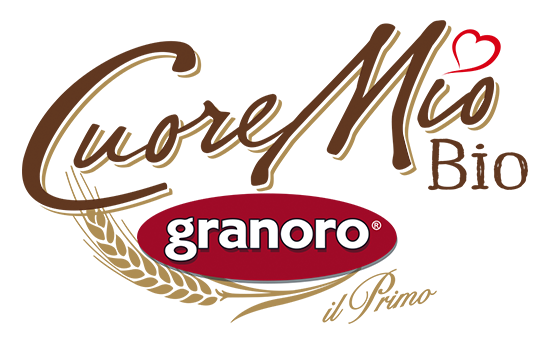


Granoro “CuoreMio Bio” pasta is made using raw materials that are 100% from Italian Organic Agriculture; a mixture composed of high-quality durum wheat semolina and barley flour rich in beta-glucans, which help to reduce cholesterol.
Discover more
Barley beta-glucans are soluble fibres performing numerous functions that are beneficial to the body and regulating the absorption of some nutrients, such as sugars and fats.
A 100g portion of Granoro’s “CuoreMio Bio” pasta provides about 3g of Beta-glucans, found naturally in barley.
A daily intake of 3g of barley beta-glucans accompanied by a healthy, active lifestyle and a well-balanced, low-fat diet, reduces cholesterol, helping to maintain normal blood cholesterol levels.
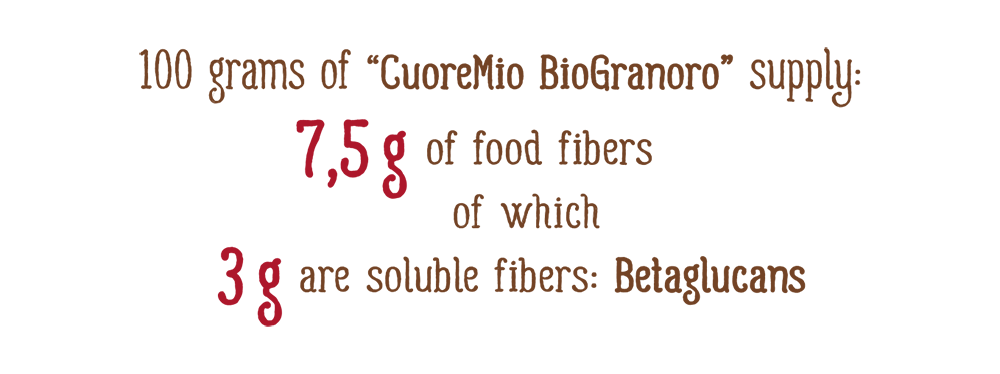

Granoro “CuoreMio Bio” pasta is a high-fibre food product.
A 100g portion of Granoro “CuoreMio Bio” pasta provides about 7.5g of fibre in total, more than double compared to the amount contained in conventional durum wheat semolina pasta. Of these 7.5g, about 3g are beta-glucans.
Organic Agriculture is about respect for nature, the environment and the protection of biodiversity. The raw materials used to make Granoro CuoreMio Bio pasta are 100% from Italian Organic Agriculture, produced using a production method that only pemits the use of natural substances and prohibits the use of chemical pesticides and fertilisers.

Granoro “CuoreMio Bio” pasta production came about as the result of a meeting between two industrialists, passionate about their work.
Discover more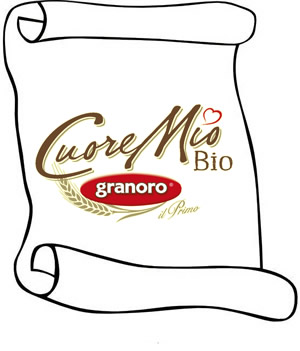

There has been a considerable evolution in the concept of diet over the last few years. Eating must be a pleasure, but it is also important to follow a healthy diet so that we can live a healthier life, preventing the onset of chronic illnesses such as cardiovascular disease.
The guidelines for a healthy diet promote the consumption of cereals, especially whole wheat ones, which are richer in vitamins, trace minerals and insoluble fibre, all of which are precious substances enclosed in the bran, which in processed cereals is lost during the production process.
Dietary fibre is an extremely important part of our diet and can be found in many foods of vegetable origin, such as fruit, vegetables, pulses and cereals. It does not have energy and nutritional values as such, but it is used to regulate some of the body’s physiological functions.

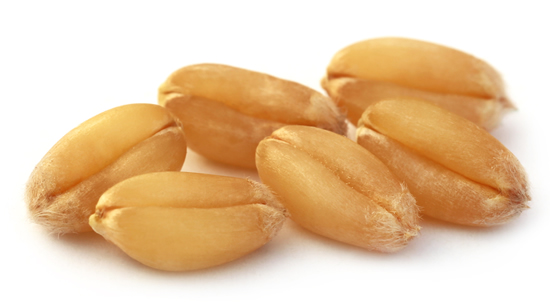
Barley is a cereal, a herbaceous plant, similar to wheat and not widely used in our diet yet.
Each grain of barley consists of about 80% of carbohydrates, including starch, which is an important source of energy for the body, whilst it is low in simple sugars.
Dietary fibre accounts for about 10% of the caryopsis and is mainly composed of a certain type of soluble fibre called beta-glucans, which differentiates barley from wheat.
It also contains protein, B vitamins and is a good source of minerals, above all potassium. The percentage of lipid content is very low.
Numerous studies have highlighted the health benefits of barley and foods made from it, which are mainly attributed to the presence of beta-glucans.
Discover more
Beta-glucans are polysaccharides (glucose polymers), which are found in some cereals; barley and oats contain the highest amounts. CuoreMio Bio pasta is made using a particular variety of pearl barley, called Orzo Beta, which produces a flour with a high concentration of soluble fibres known as beta-glucans; combined with durum wheat semolina, it can be used to produce a pasta rich in substances good for the health. Barley beta-glucans have an interesting effect on the lipid and carbohydrate metabolism, with a reduction in the total cholesterol level and above all the level of bad cholesterol (LDL) and a reduction in the glycemic response after meals.
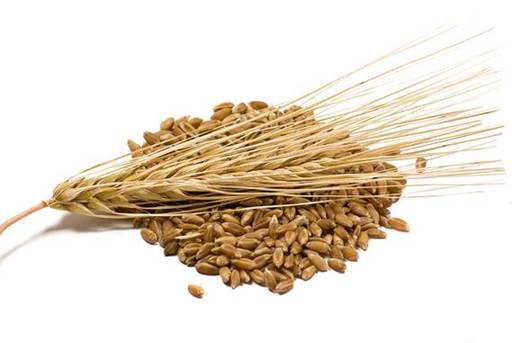
Improving wellbeing through food means eating a healthy, well-balanced diet that can help control various risk factors.
The goal is to:
• maintain normal cholesterol and blood pressure levels;
• promote better use of glucose by the body;
• maintain or reach a normal body weight.
In the event of a considerable increase in cholesterol and triglycerides, take a close look at your diet and consult a doctor.
Cholesterol is not a toxic substance and is found naturally in our body. It only becomes bad for our health when there is an excessive amount in the blood. It performs some important functions in the body:
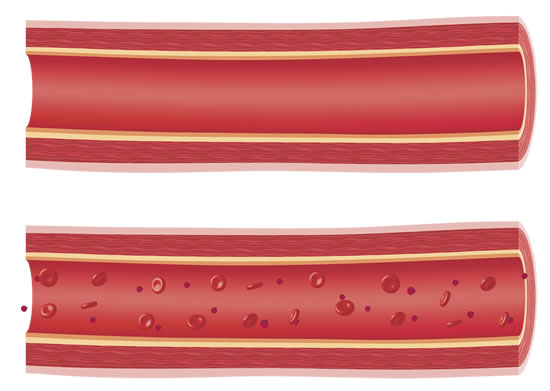

Hypercholesterolemia is when the cholesterol level is higher than the “normal”, recommended level.
Even small increases can be potentially damaging and the risk of serious problems is even greater when other risk factors are also present, such as smoking, high blood pressure, being overweight or suffering from diabetes.
Hypercholesterolemia does not present immediate symptoms: many people do not know that they suffer from hypercholesterolemia.
Granoro has always believed in the effectiveness of CuoreMio Bio pasta, so supported and encouraged by numerous scientific findings, the company decided to fund a research project for the prevention of heart failure following a heart attack, using CuoreMio Bio pasta as the primary vehicle of antioxidant active principles, and in so doing, proposing a healthy and constructive way of eating.


Report, written in English, explaining the importance of beta-glucans in our diet
Download the reportDo you have any questions or are you simply curious to find out more about Granoro “CuoreMio Bio”? Send your enquiry to pasta@granoro.it. Our Consumer Service Team will get back to you as soon as possible.
Of all the cereals, barley and oats contain the highest amounts of beta-glucans. Granoro has chosen a specific variety of barley called “Beta”, which contains a considerably higher amount of beta-glucans than conventional varieties of barley. After removing the surface layers of the grains, they are milled and divided into the various fractions. The coarser fraction (richer in beta-glucans) is recouped and mixed in the right proportions with durum wheat semolina. A mixture of organic semolina and barley destined for the production of pasta is thus created through a simple process of milling and physical selection of the barley, without the need to extract beta-glucans using chemical products. The result is Granoro’s “CuoreMio Bio” pasta, naturally rich in beta-glucans.
Granoro recommends consuming a 100g portion of “CuoreMio Bio” pasta, which will provide 3g of beta-glucans, the amount recommended by EFSA (European Food Safety Authority) and the American FDA (FOOD & DRUG ADMINISTRATION, American government body for the control of food and drugs) to help us reduce blood cholesterol. Nonetheless, it is worth noting that the consumption of high-fibre foods should always be combined with an active lifestyle and a varied and well-balanced diet.
http://www.efsa.europa.eu/en/efsajournal/pub/2471.htm
http://www.accessdata.fda.gov/scripts/cdrh/cfdocs/cfcfr/CFRSearch.cfm?fr=101.81
Granoro “CuoreMio Bio” is an organic pasta, suitable for all age groups, made with durum wheat semolina and barley. Children often shy away from eating fruit and vegetables (containing fibre), so unless they have special dietary requirements, it is always best to encourage regular consumption of cereals, pulses and fruit, all of which are high in fibre. In this way, children learn to make the right food choices.
The effect of beta-glucans on the lipid and carbohydrate metabolism has been proven by years of experimental research on humans. Regular consumption of beta-glucans, which are especially present in barley, has positive effects on the reduction of blood cholesterol. This pasta is also high in fibre, in particular soluble fibre, so when eaten regularly it helps increase the amount of fibre in your diet and improve the health of your heart, whilst still allowing you to enjoy a delicious plate of pasta.
To find a store close to you selling the “CuoreMio Bio” range of pasta and other Granoro products, please send an email to pasta@granoro.it specifying your address. We will respond to you as quickly as possible.
Alternatively, all Granoro products can be purchased online from our web store www.granoro.it.
For any other questions, you will find us on Facebook. See you there!
A food may be described as functional if, irrespective of its nutritional properties, it has been scientifically proven to have a positive effect on one or more of the physiological functions, helping to maintain or improve the body’s health and wellbeing and reduce the risk of developing diet-related diseases. Granoro “CuoreMio Bio” pasta is a functional food.
http://www.eufic.org/page/it/nutrizione/alimenti-funzionali/
A food may be described as functional if, irrespective of its nutritional properties, it has been scientifically proven to have a positive effect on one or more of the physiological functions, helping to maintain or improve the body’s health and wellbeing and reduce the risk of developing diet-related diseases. Granoro “CuoreMio Bio” pasta is a functional food.
http://www.eufic.org/page/it/nutrizione/alimenti-funzionali/
The main bibliography of written works referred to in the creation of content for the Granoro Cuore Mio website is detailed here below.
WEBLIOGRAPHY
EFSA - European Food Safety Authority
US FDA FOOD & DRUG ADMINISTRATION – American government body for the control of food and drugs.
http://nut.entecra.it/649/Introduzione.html (inserire tutti gli approfondimenti)
http://nut.entecra.it/651/Pi_ugrave__cereali__legumi__ortaggi_e_frutta.html
http://nut.entecra.it/652/Grassi__scegli_la_qualit_agrave__e_limita_la_quantit_agrave_.html
http://www.eufic.org/article/it/nutrizione/fibre/artid/potenza-alimenti-integrali/
http://www.eufic.org/page/it/page/FAQ/faqid/what-foods-contain-fibre/
http://www.eufic.org/article/it/nutrizione/fibre/artid/ruolo-fibre-dieta-sana/
http://www.eufic.org/article/it/nutrizione/fibre/artid/cereali-integrali/
http://www.anmco.it/contents/pdf_sfogliabili/Mangiare_Sano/files/basic-html/page1.html
http://www.eufic.org/page/it/malattie-legate-alimentazione/cardiovascolare/
http://www.anif.it/pages/domande-e-risposte.php
http://www.eufic.org/page/it/malattie-legate-alimentazione/cardiovascolare/
Dietary fibre is composed of a group of complex carbohydrates that cannot be digested by humans; they are found in the walls of vegetable cells and can be divided into the following types:
INSOLUBLE FIBRE
Mainly found in cereal bran, it helps regulate gastrointestinal functions. It does not ferment in the colon, it helps prevent constipation and speeds up intestinal transit time, but it does not have a direct effect on cholesterol levels and the use of glucose.
SOLUBLE FIBRE
Can be found in some pulses, in vegetables and in cereals such as barley and oats. Soluble fibre, such as barley beta-glucans, is metabolised by intestinal bacterial flora and is capable of absorbing water, forming a gelatinous compound that increases the volume and viscosity of the contents of the intestine, thus slowing down the rate at which it is emptied. This regulates the absorption of some nutrients such as fats and sugars, helping to control the level of glucose and reduce cholesterol.
How to increase the amount of dietary fibre in your diet
The recommended daily intake of dietary fibre is about 25 to 30g for the adult population; at least 10g of which should be soluble fibre.
In Italy, many people follow a diet that has become very different to the famous Mediterranean Diet followed previously, because it now contains a lot more products of animal origin and less of vegetable origin.
The intake of dietary fibre is therefore much lower than it should be. That is why the healthy eating guidelines insist on promoting the consumption of fruit, vegetables and whole wheat or high-fibre cereals.
It is still not easy to increase the intake of soluble fibre (pectin, beta-glucans, etc.) as it is not found in abundance in most foods of vegetable origin.
A good solution to this is to eat foods that have been enriched with soluble fibre, such as barley beta-glucans, foods like Granoro “CuoreMio Bio” pasta.
Barley dates back to the Stone Age and was grown by the Egyptians, Greeks and Romans.
Wild barley was first grown in an area known as the Fertile Crescent, located in the Middle East, and from there it spread to Asia Minor and northern Africa before reaching Europe.
Numerous ancient texts state that of all the cereals grown for food, barley was the one in greatest abundance. The Egyptians used barley to make focaccias and unleavened bread. Pliny the Elder wrote how Roman gladiators were known as “hordearii”, meaning “barley men”, because barley was their staple food: it was believed that this cereal was capable of giving them greater strength and resistance.
This cereal is now quickly gaining in popularity in Italy; it is mainly used to produce beer and whisky, but it can be eaten as pearl barley or transformed into flour it can be used to make pasta, bread and baked products.
The barley beta-glucans contained in Granoro’s CuoreMio Bio pasta have various positive effects on our health.
They absorb water, forming a gelatinous substance in the gastrointestinal tract that increases the volume of food ingested. This dilutes the nutrients, increasing the time it takes for them to be absorbed.
Beta-glucans therefore:
To prevent cardiovascular diseases, your diet should meet the following essential characteristics:
| Only 20% of the cholesterol that reaches the human intestine comes from food, whilst 80% is produced by the body and reaches the duodenum (the first part of the intestine) in bile. 50-60% of the total amount of cholesterol is absorbed in the intestine. |
| Cholesterol is also carried in blood, through the various tissues in the body, thanks to molecules called lipoproteins, so named because they are made up of lipids (not just cholesterol) and protein. There are various types, listed here below: |
|
By contrast, HDL cholesterol is carried away by the peripheral tissues (with the lipoprotein acting like a scavenger). Over time, thickening of the arteries can lead to the formation of plaques, which obstruct or completely block the flow of blood, causing angina, a heart attack or even a stroke. The risk of developing these diseases increase when there are other risk factors present as well, such as smoking, sedentary lifestyle, obesity, diabetes, high blood pressure, etc. |
An increase in the total blood cholesterol level is considered a risk, but an increase in LDL cholesterol (“bad cholesterol”) carries the highest risk. It has also been seen that cardiovascular diseases occur more frequently when the HDL (or “good cholesterol”) level is low.
Total cholesterolemia, in LDL and HDL, is easy to measure using a simple blood test that must be repeated over time.
The reference values summarised here below may help give a rough idea to start with. Please consult a doctor for a more in-depth assessment.
Strategies for managing cholesterol
To control excess cholesterol and prevent the risk of cardiovascular disease, various risk factors must be considered.
A balanced diet and regular physical exercise is key to the treatment of hypercholesterolemia, as they will help protect the health of the heart and circulatory system. It is important to eat foods of vegetable origin that are high in fibre, above all soluble fibre, and reduce the consumption of saturated fats, found in butter, cheese, cured meats and meat-based products.
In some cases though, a good diet is not enough and medication will be required, which must be administered under the control of a doctor.
Risk factors
A risk factor increases the likelihood of suffering from a cardiovascular disease. The simultaneous presence of multiple factors considerably increases this possibility.
Some risk factors are unchangeable:
|
|
|
|
|
The project to determine the nutraceutical characteristics of beta-glucans got off the ground in 2012, thanks to an agreement established between Granoro and the Institute of Life Sciences of the Scuola Superiore di Sant’Anna in Pisa.
To date, the only claim used in relation to CuoreMio Bio pasta refers to the degree to which barley beta-glucans can help reduce blood cholesterol levels; however the latest research conducted by the Scuola Superiore Sant’Anna in Pisa seems to show that CuoreMio Bio pasta can offer further health benefits, as the benefits of the fibre may remain even after the digestive process.
Water-soluble barley beta-glucans are capable of stimulating the formation of new blood vessels in the presence of oxidative stress: they could therefore help those who have suffered a heart attack to “repair” their heart. The research, presented in Spain at the Congress of the European Society of Cardiology and published by the scientific publication, “Journal of Cellular and Molecular Medicine”, represents an important development, not just for the International Scientific Community, but also for the world of pasta and for Granoro, which funded the study.
The study showed that treatment of cardiac endothelial cells with barley beta-glucans increases the levels of an essential enzyme, manganese superoxide dismutases, already known for its ability to increase antioxidant defences and the revascularizing (that is to say repairing) properties of the endothelial progenitor cells. The increase in this enzyme increases the endothelial production of nitric oxide, a known vasodilator, and increases the ability to regenerate blood vessels, thus helping to “repair” the heart of a person who has suffered a heart attack.
This is the latest development: beta-glucans are not only valuable because they help maintain normal blood cholesterol levels, they also stimulate the endothelium’s endogenous capacity to generate new vessels, above all in the presence of a similar ischemic oxidative stress.
Eating CuoreMio Bio pasta for a few weeks protects the heart from damage caused by ischemia and reperfusion (damage similar to that caused when cardiac blood perfusion is restored after coronary angioplasty). This considerably increases the survival rate of those who follow the “CuoreMio Bio” diet.
How? The tests are revealing fine regulatory mechanisms activated by the diet. However, eating the pasta gradually leads to an effective increase in the number of collateral coronary capillaries that allow cardiac tissue to compensate for the brusque reduction in myocardial perfusion. Amazingly, a daily intake of 3% of beta-glucans induces the expression of Parkin, a protein that promotes the survival of cardiac cells during an ischemic stress.
This shows that the amount of beta-glucans contained in a portion of pasta can have a considerable cardioprotective effect when eaten on a daily basis.
EFSA - European Food Safety Authority
US FDA FOOD & DRUG ADMINISTRATION – US government body for the control of food and drugs.
Come and join us on social media to stay up to date with the latest developments from Granoro!